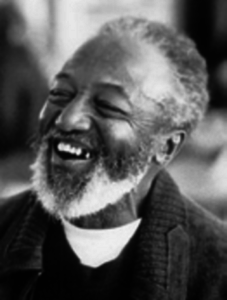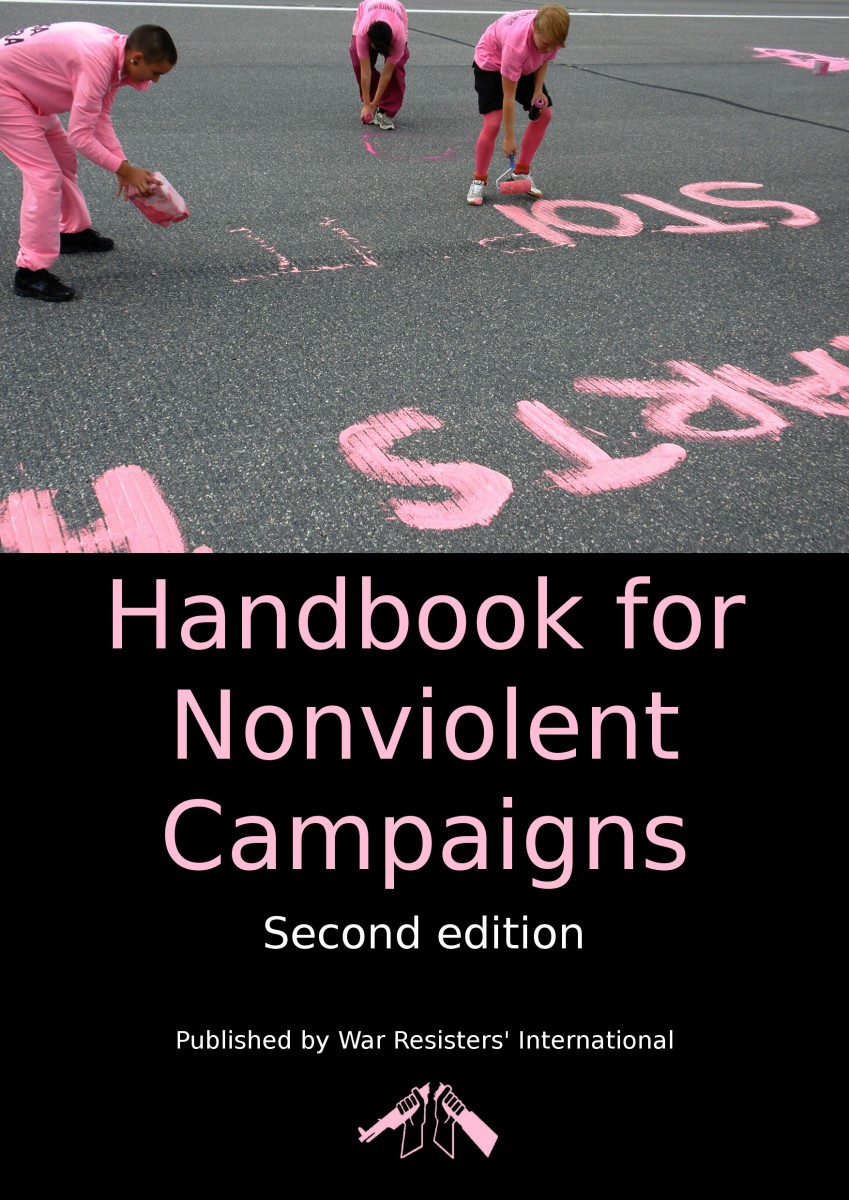Non-Violence and De-escalation
Active Nonviolence Definitions

Wally Nelson: Nonviolence is the constant awareness of the dignity and humanity of oneself and others; it seeks truth and justice; it renounces violence both in method and in attitude; it is a courageous acceptance of active love and goodwill as the instrument with which to overcome evil and transform both oneself and others. It is the willingness to undergo suffering rather than inflict it. It excludes retaliation and flight. – Wally Nelson, (1909-2002), American civil rights activist who was also a peace activist jailed as a conscientious objector during WWII, a co-founder of the Greenfield, MA, Farmers Market, war tax resister, and a trainer in nonviolent direct action.
Gene Sharp: Nonviolent action is a technique of sociopolitical action for applying power in a conflict without the use of physical violence. Nonviolent action may involve acts of omission, acts of commission, or a combination of the two. Nonviolent action has nothing to do with passivity, submissiveness, and cowardice; just as in violent action, these must first be rejected and overcome. Gene Sharp, (1928 – 2018) was an American political scientist and founder of the Albert Einstein Institution.


From 1900 to 2006, nonviolent campaigns were twice as likely to succeed outright as violent insurgencies. Nonviolent campaigns are becoming increasingly successful and common, whereas violent insurgencies are becoming increasingly rare and unsuccessful. No campaigns failed during that time period after they had achieved the active and sustained participation of just 3.5% of the population.
Nonviolent campaigns were often much more inclusive and representative in terms of gender, age, race, political party, class, and the urban-rural distinction [and] all different levels of physical ability. Countries in which people wage nonviolent struggle were way more likely to emerge with democratic institutions than countries in which they wage violent struggle. Civil resistance tends to leave behind societies in which people can live more freely and more peaceably together.
Erica Chenoweth, Harvard Professor, author of “Why Civil Resistance Works: The Strategic Logic of Nonviolent Conflict,” From her Nov. 14, 2013, TED Talk
What is an Affinity Group?
An Affinity Group (AG) is a small group of 5-15 people who trust each other and share a vision and approach to the sort of activism they do. They come together to participate in a nonviolent campaign or action. An AG might stay together for years or form for one event. AGs help us prepare for, participate in, and support each other in actions. We have each other’s backs. In troubled, conflictual times, it is best not to act alone.
AGs, like working groups or committees, are a small part of larger group with a central purpose, and they adhere to a code of nonviolence. The AG structure allows for flexibility of action, and a level of autonomy while cooperating with others in a campaign or mass action. Interconnection of AGs minimizes the likelihood of disruptors, as everyone knows everyone else. Most AGs are non-hierarchal, so there are no “leaders” for authorities to target.
Finding or creating an Affinity Group
Gather together with a small group of trusted people who have similar opinions about the issues in question and the methods of action to be used. Those people may know others to invite. It’s important for AG members to be able to meet in person. Linking with other AGs in a campaign through spokes councils attended by a representative of each AG is a helpful communication and planning structure.
AGs develop a shared idea of what is wanted individually and collectively from the action or campaign. They create agreements acceptable for the whole collective on basics: how active, how spiritual, what support each person needs, willingness to risk arrest, political perspectives, action methods, etc.
Affinity Group direct actions
AG actions are varied but they all encompass nonviolent direct action: advocacy and reform work, petitions or legislative approaches, building alternative and new social structures and institutions, drama and music and art, teach-ins, flash mobs, nonviolent media hijacking. Hundreds of action ideas can be found here and here.
Nonviolent direct action training of a half-day to several days is strongly advised for anyone contemplating actions in which arrests or violent conflict are anticipated. The AG carefully plans the action, and decides who will take on the roles needed such as media contact, first aid, legal, and those willing to risk arrest. Support roles are vital to the safety of the participants, ensuring they have food and water, and to monitor the authorities’ response.
Code of Nonviolence
- Our attitude is respectful toward all we encounter in our actions.
- We use no violence, verbal or physical, toward any person.
- We do not harm anyone, and we will not retaliate in reaction to violence.
- We do not carry weapons.
- We will not be under the influence or bring any non-prescribed drugs or alcohol.
- We will not bring dogs nor other animals, except for service animals.
- During a demonstration we will not run nor make threatening motions.
- In case of any confrontation, we will seek to de-escalate.
- We affirm that people’s lives and safety are more important than property. We focus on creative actions that do not include property destruction.
- All participants in actions where arrests or violent confrontations are anticipated must receive nonviolent direct action training.
Click HERE to view/download a PDDF copy of the Affinity Group information above.
Safety And De-Escalation Training And Tips
Video: From Move On – Calming And De-Escalation Strategies (excellent 4 minute video)
Video: Hands Off: De-escalation and Safety Training, 1 Hour
Toolkit: Hands Off: Event Preparation
Toolkit: Indivisible: Safety And Security And Digital Preparedness
Toolkit: From Greenpeace – Protest Safety Tips
Toolbox: Beautiful Trouble
Toolkit: Training For Change
Nonviolent Direct Action Information And Resources
Direct action encompasses many methods, from silent vigils to mass actions. It also includes risking arrest through civil disobedience, a serious undertaking which requires far more extensive training and organizing than is offered by this resource page.
198 Methods Of Nonviolent Action
These tried and true nonviolent resistance actions are categorized into methods of:
nonviolent protest and persuasion, social noncooperation, economic noncooperation (boycotts, strikes), political noncooperation, and nonviolent intervention. From Politics of Nonviolent Action, 1973, by Gene Sharp, an American political scientist and founder of the Albert Einstein Institution (https://www.aeinstein.org/on-nonviolent-action).
New methods added at the Commons Social Change Library include: Maps and Maptivism, QR Codes, Digital File-Sharing, Nonviolent Media Hijacking, “Trend” a Hashtag, Influence Search Engine Results, Livestreaming, Check-ins, Self-Surveillance, and Flash Mobs.
Nonviolent Direct Action Agreement/Code of Conduct:
This is one example, created by Sugar Shack Alliance
- Our attitude will be one of openness and respect toward all we encounter in our actions.
- We will use no violence, verbal or physical, toward any person. If there are violent or armed counter demonstrators, we will not engage with them. Safety monitors could deal with that.
- We will not harm anyone and we will not retaliate in reaction to violence.
- We will not carry weapons.
- We will neither be under the influence nor bring any non-prescribed drugs or alcohol.
- We will neither bring dogs nor other animals, except for service animals.
- During a demonstration we will not run nor make threatening motions.
- In case of confrontation, we will seek to de-escalate.
- We affirm that people’s lives and safety are more important than property. We prefer to focus on creative actions that do not include property destruction.
- All participants in Sugar Shack actions intending to risk arrest will receive preparation in nonviolent direct action.
- Those intending to risk arrest in concert with us will be members of affinity groups represented at a representative body.
- We support a diversity of non-violent direct action including, but not limited to, civil disobedience.
- We will uphold the code of conduct and action agreements while participating in actions with Sugar Shack Alliance.
Another example Code of conduct for nonviolent direct actions and civil disobedience: No Voice Unheard (partnered with 50501 and Build the Resistance)
Training
War Resisters International’s Nonviolence Training Handbook
The Resistance Lab is a series of trainings (next training June 1) that look at how non-violent movements around the world have responded to leaders who seize power in authoritarian ways and the most effective tools and tactics to utilize in these moments. Pramila Jayapal, Congresswoman of Seattle, WA, launched The Resistance Lab, organizing trainings to build our movement and give you the tools you need in this moment. Handouts for this training are here: Resistance Lab Handouts
Rachel Madow’s 3/31/25 Interview with Jayapal on the Resistance Lab.
Local Trainings
There are many skilled nonviolence trainers in Franklin County and beyond who are convening trainings. Stay tuned through information on the FCCPR.us website for local contacts and to find out more.

Legal Resources
National Lawyers Guild Of Massachusetts
Trainings: https://nlgmass.org/street-law-clinics
All National Lawyers Guild of MA trainings are carried out on zoom. Here are several below.
Know Your Rights: Focuses on people’s rights regarding police stop and search policies. Educates people, regardless of their immigration status, so when confronted by law enforcement (police, ICE, FBI, etc.), they know their rights and can utilize them.
Direct Action: Supports those who plan to take direct action that may bring them into confrontation with law enforcement, risk of arrest, and/or civil disobedience. Information about arrests and court procedures relevant to Massachusetts.
Legal Observer Training: Under the supervision of an attorney, Legal Observers (LOs) are an integral part of any legal team representing activists. Any legal professional or political activist can as a Legal Observer who serves two functions, as a deterrent for police misconduct and to monitor and record instances of police misconduct.
National Lawyers Guild, NY: Know Your Rights for Law Enforcement Encounters
American Civil Liberties Union Of Massachusetts
Boston office: 617/482-3170
W MA CLUM attorney Javier Luengo Garrido: 413/727-8515
ACLU’s Know Your Rights: Protesters Rights
Center for Constitutional Rights: If An Agent Knocks
Ruckus Society: Security Culture for Activists
War Resisters: Dealing with Fear
Organizers’ Glossary
- Affinity groups (AGs): 8 – 12 people who come together to participate in a campaign or action including support post-arrest, if there are arrests. It can stay together for years, or coalesce around one action. AGs plan for, prepare for, participate in and support each other in actions or campaigns. You have each others’ backs. It is important to know each other. If there are infiltrators at an action, they would not be associated with an affinity group and would stand out. Each group member has a role, such as support, communications, risk arrest, safety monitor and more. AGs are the basis for grassroots’ decision-making at actions by sending a spokesperson to a decision making council.
- Consensus decision-making: A process that aims to take everyone’s concerns into consideration, and reach a decision that has the active consent of all the participants. It is based on listening, respect, and participation by everyone.
- Civil disobedience: Deliberate, open, and peaceful violation of particular laws, decrees, regulations, military or police orders, or other governmental directives. The command may be disobeyed because it is seen as itself illegitimate or immoral, or because it is a symbol of other policies which are opposed. Civil disobedience may be practiced by individuals, groups, or masses of people.
- Noncooperation: Acts that deliberately restrict, withhold, or discontinue social, economic, or political cooperation with an institution, policy, or government. A general class of methods of nonviolent action.
- Nonviolent discipline: Orderly adherence to the planned strategy and tactics of an action and to nonviolent behavior even in face of repression. This is a major factor contributing to the success of a nonviolent struggle movement.
- Nonviolent action: a form of political action based on the decision not to physically harm or destroy human life. It is an alternative to both passive submission and violence, it includes both actions “against” something and constructive actions ‘for’ an alternative, both legal and illegal.
The technique includes many specific methods, which are grouped into three main classes:- nonviolent protest and persuasion
- noncooperation
- nonviolent intervention
The technique’s variables include the motives for using it, the objectives, the intended way success is to be accomplished (mechanism), and the relation between nonviolent action and other forms of action.
- Direct action: Any action where individuals or groups act to bring about change themselves, rather than asking or expecting others to act on their behalf. Can be disruptive (blockading a weapons factory) or constructive (guerilla gardening).
- Strategy and Tactic: A strategy is a long term plan which aims to achieve certain objectives (like a campaign goal). A tactic is a specific action – like an event, activity or nonviolent direct action – which contributes to the implementation of the strategy.
- Campaign: organized social action designed to bring about a specific change. Campaigns are run by a group of people with a common understanding and shared vision, and are made up of a series of actions and activities over a specific time frame, with a particular goal and a strategy on how to achieve that goal.
- Movement (or ‘social movement’): a cross section of groups and campaigns that associate under a broad banner, such as the environmental movement or the anti-globalization movement. Movement’s can last for decades, are often international, with many groups acting under a banner, and can be disputed or hard to define. Compiled by Sugar Shack Alliance, 2018, 2025. Sources: War Resisters League International and The Albert Einstein Institution.
Additional Resources
DC Peace Team
Waging Non-Violence
Non-violence international
Training for Change
War Resisters League International
